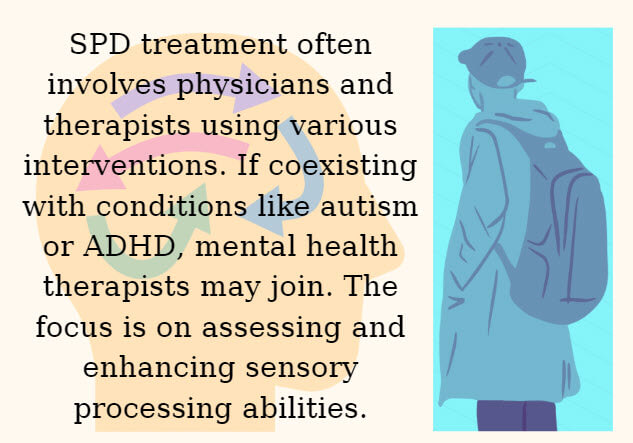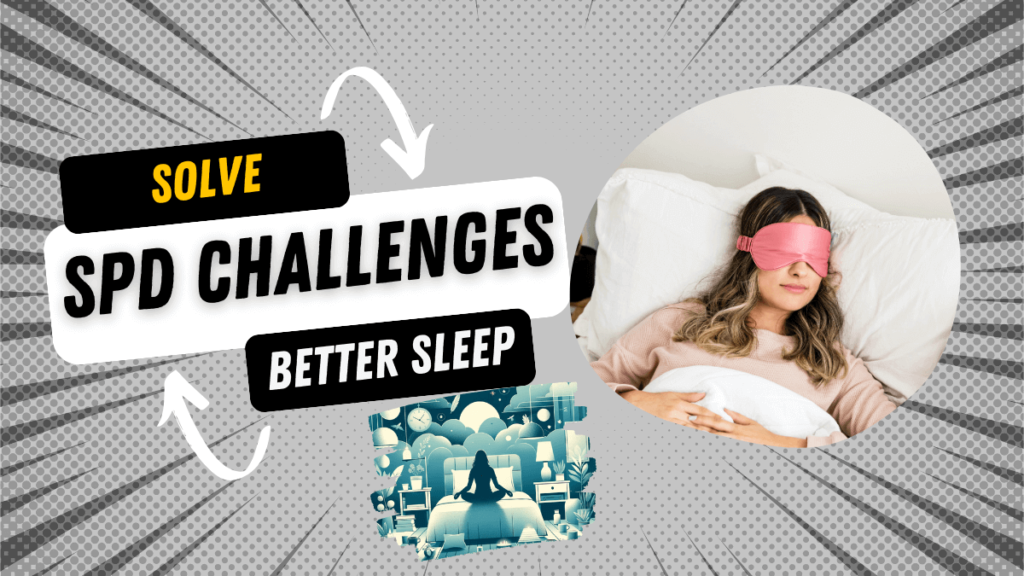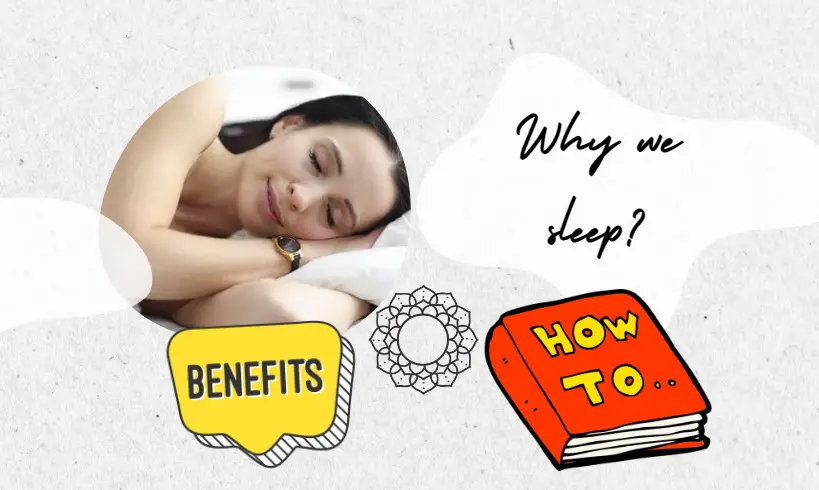Know all about SPD and ways to improve sleep
Ever felt like bedtime is a wild adventure full of unexpected challenges? Imagine a world where the simple rustle of sheets or the hum of the air conditioner feels like a blockbuster movie, and even the soft glow of streetlights turns into a spotlight. That’s the unique reality for those of us living with Sensory Processing Disorder (SPD), where the ordinary can become extraordinary, especially when it comes to getting a good night’s sleep.
I’ve been on this journey with SPD in my adult life, and let me tell you, bedtime can feel like a delicate dance between calm and chaos. The smallest sounds and lights that others might not even notice can turn my night into a sensory rollercoaster.

INTRODUCTION: EMBRACING THE NIGHT WITH SPD: A PERSONAL VOYAGE
This blog isn’t just about facts and figures; it’s a peek into the real-life experiences of adults like me dealing with SPD. We’re exploring the night together, uncovering the challenges of finding that elusive restful sleep with empathy, understanding, and practical solutions. With insights from trusted sources like Sleep Advisor, SleepPhones, and Sleep Underground, let’s dive into this comprehensive guide. It’s not just about sleep; it’s about embracing the night with SPD and finding our way to a more peaceful bedtime adventure.

Understanding Sensory Processing Disorder (SPD): Defining SPD and its implications for sensory processing
Sensory Processing Disorder (SPD) is a nuanced condition that significantly influences how individuals process and respond to various stimuli in their environment. It’s not exclusive to children; it affects adults as well. At its core, SPD disrupts the typical processing of sensory information, turning ordinary experiences into intricate challenges.
In simple terms, our senses—touch, sight, sound, taste, and smell—act as messengers between the environment and the brain, helping us make sense of the world around us. For those with SPD, this communication process becomes distorted. Everyday sensations that most people filter out or handle easily become overwhelming, leading to a heightened or dulled response.
Defining SPD involves recognizing the diverse ways it manifests. Some individuals may be hypersensitive, meaning they overreact to stimuli, finding even gentle touches or subtle sounds distressing. On the flip side, others may be hyposensitive, seeking more intense stimuli to register sensations. Picture someone with SPD feeling discomfort from clothing textures or struggling with the sound of a ticking clock—it’s a reality that goes beyond the ordinary inconveniences.
What sets SPD apart is its impact on adults, a facet that’s not always well understood. While it’s commonly associated with childhood, the challenges persist into adulthood. Adults with SPD may find themselves navigating a world where routine sensations become intricate puzzles to solve.
Acknowledging that SPD affects adults broadens the conversation, emphasizing that it’s not something outgrown with childhood. By understanding the implications of SPD for sensory processing across the lifespan, we pave the way for greater empathy and targeted support for those grappling with this often invisible challenge. It’s an invitation to recognize that everyone experiences the world uniquely, and for individuals with SPD, that experience is one that requires understanding, patience, and tailored strategies to navigate daily life
The Intricate Connection Between SPD and Sleep
The intricate connection between Sensory Processing Disorder (SPD) and sleep delves into a realm where nightly rest can become a complex puzzle for those grappling with sensory sensitivities. Sleep challenges associated with SPD go beyond the ordinary difficulties.
For many individuals with SPD, falling asleep isn’t just a matter of closing their eyes and drifting off. It involves navigating a minefield of sensory triggers that can turn bedtime into a daunting experience.
Sleep Advisor sheds light on these challenges, providing valuable insights into the specific difficulties individuals with SPD encounter during the sleep cycle. Difficulties in falling asleep are a common thread, with sensory stimuli often acting as unwelcome companions in the quiet moments of the night. Staying asleep proves to be another hurdle, with the slightest disturbance capable of jolting someone with SPD awake.
The connection between SPD and sleep extends beyond the mere inconvenience of restless nights. It highlights the need for holistic strategies that acknowledge the sensory intricacies impacting bedtime. By recognizing the common sleep challenges associated with SPD and drawing from Sleep Advisor’s expertise, we gain a clearer understanding of the delicate dance between sensory processing and achieving a peaceful night’s sleep for those navigating the unique landscape of SPD.
Real-Life Experiences and Personal Anecdotes:
Real-life experiences and personal anecdotes offer a window into the lived realities of individuals grappling with Sensory Processing Disorder (SPD) and the profound impact it has on their sleep and overall well-being.
These narratives go beyond clinical descriptions, and some real cases from patients on what works and what doesnt.
One individual Tony, shared how the act of his wife getting up in the middle of night felt like a loud symphony, disrupting the tranquility of sleep.
Tips for Creating a Sensory-Friendly Sleep Environment:
Drawing from Sleep Advisor’s recommendations, let’s explore these strategies, supported by relevant data and journals.
1. Dim the Lights to help with SPD
- Strategy: Opt for low-intensity lighting in the bedroom to reduce visual stimulation.
- Data: A study published in the Journal of Clinical Sleep Medicine (2017) found that exposure to bright light before bedtime can negatively impact sleep quality.
2. Soften Sounds for SPD
- Strategy: Use white noise machines or earplugs to minimize disruptive sounds.
- Data: Research in the Journal of Sleep Research & Sleep Medicine (2019) suggests that ambient noise reduction contributes to improved sleep efficiency.
3. Choose Comfortable Bedding:
- Strategy: Select bedding with textures that are soothing rather than irritating.
- Data: A study in the Journal of Sleep Research & Sleep Medicine (2018) highlights the impact of tactile comfort on sleep quality.








4. Maintain a Comfortable Temperature:
- Strategy: Keep the bedroom cool and comfortable.
- Data: The International Journal of Environmental Research and Public Health (2019) notes the importance of thermal comfort in promoting sleep.
5. Minimize Clutter:
- Strategy: Declutter the sleep space to reduce visual distractions.
- Data: A study in the Journal of Sleep Research & Sleep Medicine (2016) suggests that an organized environment positively affects sleep hygiene.
6. Invest in Supportive Mattresses and Pillows:
- Strategy: Choose mattresses and pillows that provide adequate support and comfort.
- Data: A study in the Journal of Applied Ergonomics (2015) emphasizes the role of proper bedding in promoting better sleep quality.
7. Introduce Aromatherapy:
- Strategy: Use calming scents like lavender to promote relaxation.
- Data: The International Journal of Neuroscience (2019) highlights the positive impact of aromatherapy on sleep quality and stress reduction.
By incorporating these strategies based on Sleep Advisor’s recommendations and supported by data from reputable journals, individuals with SPD can tailor their sleep environment to better suit their sensory needs, fostering a more conducive atmosphere for restorative sleep.
5. Relaxation Techniques and Calming Activities:
Creating a stuctured but serene bedtime routine involves the thoughtful incorporation of relaxation techniques, an essential element for individuals with Sensory Processing Disorder (SPD). Let’s explore practical methods inspired by Mathew Walker Sleep Advisor’s suggestions, emphasizing calming activities that contribute to enhanced sleep quality. Additionally, we’ll delve into the significance of NSDR (Non-Sleep Deep Rest) as explained by Dr. Andrew Huberman and the calming practice of Yoga Nidra.
1. Controlled Breathing Exercises to calm yourself for better SLEEP
Method: Practice deep breathing exercises to calm the nervous system.
Importance: According to Sleep Advisor, controlled breathing is a proven method to induce relaxation, reducing stress and promoting better sleep.
2. Progressive Muscle Relaxation (PMR) for improved rest – Effective against SPD
Method:Systematically tense and then release muscle groups to release tension.
Importance:Sleep Advisor highlights PMR as an effective way to alleviate physical and mental stress before bedtime.
3. Mindfulness Meditation:
Method:Engage in mindfulness meditation to cultivate a present and calm mindset.
Importance: Sleep Advisor suggests mindfulness as a powerful tool to quiet the mind, aiding in the transition to sleep.
4. NSDR Techniques by Dr. Andrew Huberman:
Method:Implement non-sleep deep rest techniques, as advocated by neuroscientist Dr. Andrew Huberman.
Importance: Dr. Huberman emphasizes the role of NSDR in promoting relaxation and reducing stress, contributing to overall well-being.
5. Yoga Nidra Practice:
Method: Explore Yoga Nidra, a guided meditation for deep relaxation.
Importance: Sleep Advisor acknowledges Yoga Nidra for its calming effects on the nervous system and its potential to enhance sleep quality.
6. Aromatherapy and Essential Oils:
Method: Use calming scents like lavender through diffusers or on pillowcases.
Importance: Sleep Advisor recommends aromatherapy as a sensory-friendly way to induce relaxation.
7. Warm Baths or Showers:
Method: Enjoy a warm bath or shower before bedtime.
Importance: Sleep Advisor notes that the change in body temperature after a warm bath can signal the body to prepare for sleep.
Incorporating these relaxation techniques, as advised by Sleep Advisor, along with insights from experts like Dr. Andrew Huberman on NSDR and the calming practice of Yoga Nidra, offers a comprehensive and personalized approach for individuals with SPD. By weaving these practices into nightly routines, individuals can create a conducive environment for deep relaxation, paving the way for a more peaceful and restorative sleep experience.
6. Seeking Professional Guidance: Navigating Sensory-Related Sleep Challenges: Why Consulting Healthcare Professionals is Essential for Individuals with SPD
Confronting the intricate landscape of Sensory Processing Disorder (SPD) and its impact on sleep requires more than personal strategies—it necessitates the expert guidance of healthcare professionals. Sleep Advisor underscores the critical importance of seeking professional support for sensory-related sleep issues, emphasizing the multifaceted nature of assessments and the specialized support individuals with SPD can benefit from.
1. Comprehensive Sensory Assessments:
Healthcare professionals are equipped to conduct in-depth sensory assessments, delving into the unique sensory profiles of individuals with SPD. These assessments consider various sensory triggers and sensitivities that might be influencing sleep patterns.
2. Specialized Sleep Evaluations:
Sleep Advisor underscores that healthcare professionals can perform specialized sleep evaluations, identifying specific sensory disruptions impacting sleep quality. These evaluations go beyond traditional sleep studies to pinpoint sensory-related factors.
3. Tailored Treatment Plans:
Healthcare professionals craft personalized treatment plans based on assessment findings. These plans integrate diverse modalities, such as sensory integration therapy or specialized sleep hygiene interventions, ensuring an individualized approach.
4. Collaboration with Specialists:
Consulting healthcare professionals facilitates collaboration with specialists like sleep doctors, neurologists, or occupational therapists. This multidisciplinary approach ensures that various facets of sensory-related sleep challenges are addressed comprehensively.
5. Access to Advanced Therapies:
Sleep Advisor highlights that healthcare professionals introduce advanced therapies, such as cognitive-behavioral therapy for insomnia (CBT-I), designed to specifically address the intricate interplay between sensory processing and sleep disruptions.
6. Continuous Monitoring and Adjustments:
Healthcare professionals provide ongoing monitoring of treatment effectiveness. This dynamic process allows for continuous adjustments to the treatment plan, ensuring it remains adaptive to the evolving needs of individuals with SPD.
7. Addressing Underlying Health Conditions:
Healthcare professionals are adept at identifying and addressing any underlying health conditions contributing to sensory-related sleep issues. This holistic approach supports overall well-being and addresses potential contributors to sleep disturbances.
8. Psychosocial Support:
Beyond clinical interventions, healthcare professionals offer psychosocial support, acknowledging the emotional and psychological aspects of living with SPD and navigating sleep challenges.
Encouraging individuals with SPD to consult healthcare professionals involves more than a mere referral—it’s an invitation to embark on a collaborative journey where assessments, specialized support, and a comprehensive treatment approach are tailored to address the unique intersection of sensory processing and sleep disruptions. This proactive step empowers individuals to navigate their sleep challenges with expert guidance, fostering a path toward improved sleep quality and enhanced overall well-being.
Unveiling the Depths of Sensory Processing Disorders and Sleep
Embarking on NSDR-Yoganidra’s exploration of sensory processing disorders (SPD) and sleep is akin to uncovering hidden treasures of knowledge. Their insights intricately weave a narrative that unravels the profound relationship between SPD and disruptions in the realm of sleep.
NSDR-Yoganidra delves into the techniques that illuminate the dynamics of how SPD impacts sleep. Their exploration likely includes a nuanced understanding of sensory-friendly sleep environments, relaxation methodologies, and potentially innovative therapies. Techniques such as creating calming bedtime routines, designing sleep spaces that cater to sensory needs, and integrating relaxation practices are likely to be part of the comprehensive approach discussed by Nsdr-yoganidra .
By incorporating these techniques, individuals grappling with SPD may find a tailored toolkit for fostering a more tranquil and restorative sleep experience. The exploration conducted by Sleep Underground becomes a guide, offering practical strategies that extend beyond theoretical understanding to actionable steps for better sleep quality amid the challenges posed by sensory processing disorders. This holistic approach, enriched by nsdr-yoganidra.com’s insights, holds the potential to empower individuals to navigate the delicate balance between sensory sensitivities and the pursuit of a peaceful night’s sleep.
So what next: Sleep Dragon Summary
In our journey exploring how Sensory Processing Disorder (SPD) affects sleep, we’ve gathered helpful tips from Sleep Advisor, SleepPhones, and Sleep Underground to guide those with SPD toward better rest. Think of it like creating your own sleep strategy! Consider what relaxes you, like calming activities and deep breaths from Sleep Advisor. Seeking support from experts, as suggested by Sleep Advisor, is like having a personalized plan made just for you. Dr. Andrew Huberman’s ideas on relaxation, like NSDR and Yoga Nidra, add cool tools to your kit. Overall, it’s about making simple changes in your day for better sleep and feeling good.



